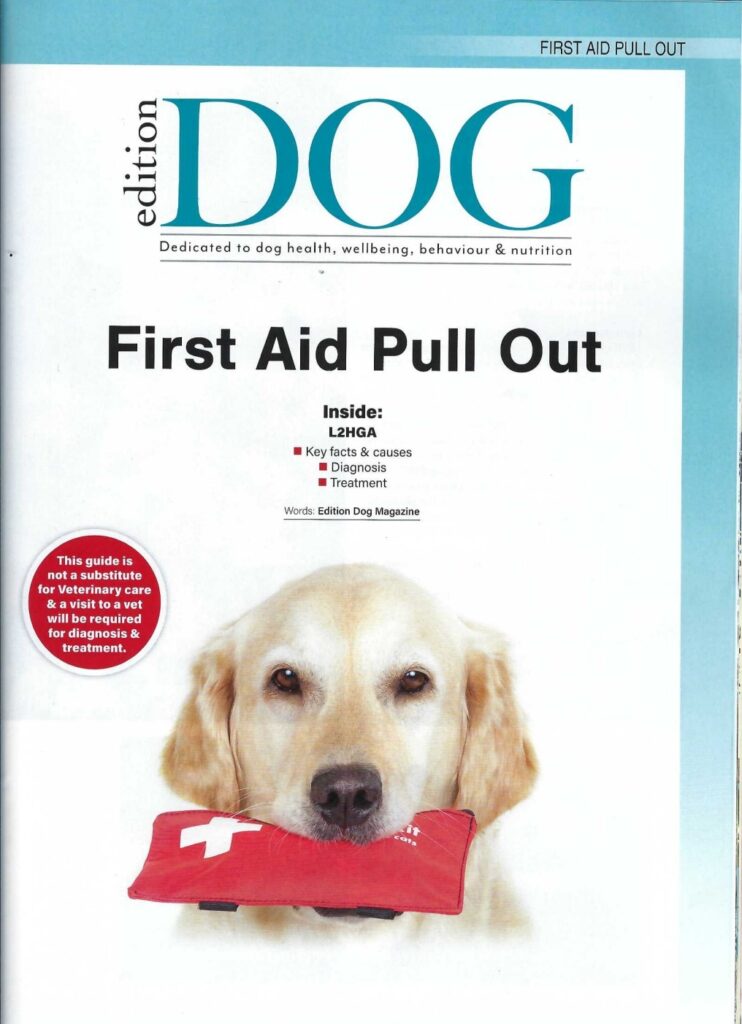Why is health screening so important for Staffordshire Bull Terriers?
Although there is a lot of information on this page, please bear with us and read in its entirety, these conditions are distressing and we must do our utmost to help eliminate them from our beloved breed.
L2-HGA, or L-2-hydroxyglutaric aciduria.
L2-HGA is a neurometabolic disorder characterised by elevated levels of L-2-hydroxyglutaric acid in urine, plasma and cerebrospinal fluid.
What are the signs and symptoms?
L2-HGA causes various clinical neurological problems, including ataxia (observed as “shaky walking”, muscle stiffness) or psychomotor retardation (the slowing down or hampering of mental or physical activities), or seizures (like epilepsy.) Affected dogs can experience behaviour changes, which can range from loss of trained behaviour, to hyperactivity, to increased aggression, while seizures can vary in severity and duration. Signs usually appear at around 6 – 12 months of age, although it can occur later.
A DNA test is available for Staffordshire Bull Terriers, however THERE IS NO TREATMENT AVAILABLE FOR THIS DISEASE. It is imperative that all Staffordshire Bull Terriers are tested, but only one of the reasons we must do so.
WARNING!!
This video is distressing to watch.
L2-HGA affected case – Newton
HC or Hereditary Cataracts

Hereditary Cataracts is an inherited eye disease in Staffordshire bull terriers, both parents must be carriers of the defective gene to produce an affected offspring. Hereditary Cataracts are a progressive condition, which means that although a puppy is not born with cataracts they will start to develop at a young age, Hereditary Cataracts are most commonly present within a few weeks to months after birth, with small cataracts that are visible on a veterinary eye examination. Cataracts from this disease will eventually affect the whole lens in both eyes, leading to complete blindness between 2-3 years of age. The condition is bilateral which means it affects both eyes equally. Thanks to research by the Animal Health Trust in Newmarket there is a now a DNA Test for Hereditary Cataracts.
Cataracts are opacities in the lens of the eye caused by structural changes in lens proteins. A normal lens allows light to pass through to the retina in the back of the eye. Light cannot pass through the parts of the lens affected by cataracts, and vision becomes blurry
Common Symptoms
In general, carrier dogs do not have features of the disease but when bred with another carrier of the same mutation, there is a risk of having affected pups. Each pup that is born to this pairing has a 25% chance of inheriting the disease and a 50% chance of inheriting one copy and being a carrier of the gene mutation. As symptoms may not appear until adulthood, genetic testing should be performed before breeding. In order to eliminate this mutation from breeding lines and to avoid the potential of producing affected pups, breeding of known carriers to each other is not recommended. Staffordshire bull terriers that are not carriers of the mutation have no increased risk of having affected pups.
PHPV – Persistent Hyperplastic Primary Vitreous

Persistent hyperplastic primary vitreous is the second most common cause of paediatric leukocoria. It is congenital and is usually diagnosed in the early neonatal period. The disease is almost always unilateral, and the affected eye is usually microphthalmic, a rare developmental disorder of the eye in which one or both eyes are abnormally small.
Microphthalmia is inherited in an Autosomal Recessive manner in dogs with maternal effect. This means that in order to develop the disease dogs must not only receive two copies of the mutated gene (one from each parent) their dam must also have inherited two copies of the Mutation from her parents.
The eyeball will appear smaller than normal for the breed as the eye has failed to form normally. Several other eye structures also fail to form which can cause secondary issues. Signs of visual impairment will also be noticed. The degree of visual impairment depends on the severity of the defect. If the eyeballs fill half of the openings, there is a 50% chance the puppy will be blind. If more severe, most puppies are blind.
THERE IS NO CURE FOR THIS CONDITION
Further information from the British Veterinary Association (BVA) is available here
Edition Dog



The current issue of Edition Dog (Issue 58) has the Staffordshire Bull Terrier as BREED FOCUS and the Health & First Aid pull-out is all about L2-HGA so make sure you go out and get your copy NOW!
This is to coincide with the Staffordshire Bull Terrier being the Breed In Focus” at this year’s Edition Dog Live Event taking place on Sunday 27th August at Stoneleigh Park, Warwickshire.
The SBT Club stand will be there along with The SBT Heritage Centre, SBT Welfare and the East Anglian SBTC Display Team.
Edition Dog have kindly given The SBTC a code to “Buy 1, Get 1 Free” on tickets for the Event so make sure you pre-book your tickets now and see you there!!
The BOGOF code and website to book tickets are detailed in the attached flyer.
